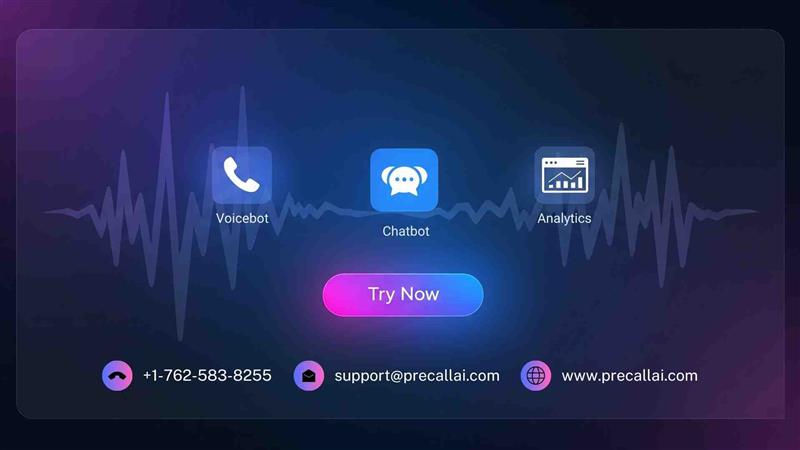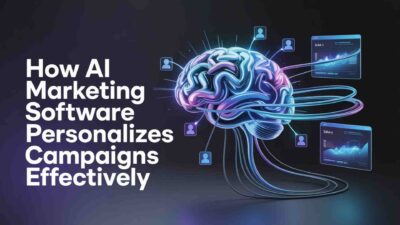Introduction to AI-Powered Call Center Transformation
TL;DR Call centers serve as critical touchpoints connecting businesses with customers daily. Traditional operations struggle with inefficiencies costing millions annually in wasted resources. AI tools to optimize call center workflows revolutionize how contact centers operate and deliver service.
Table of Contents
Manual processes create bottlenecks, slowing response times and frustrating customers. Agents spend excessive time on administrative tasks rather than helping callers. Intelligent automation addresses these challenges while improving both outcomes and experiences.
Modern customers demand instant responses and personalized service across all channels. Meeting these expectations requires technology amplifying human capabilities strategically. This comprehensive guide explores practical strategies for implementing AI workflow optimization.
Understanding Call Center Workflow Challenges
High Call Volume Management
Contact centers receive thousands of calls daily, overwhelming available agent capacity. Peak periods create long wait time,s damaging customer satisfaction scores. Staffing to handle peaks means paying for idle capacity during slower periods.
Unpredictable volume spikes from marketing campaigns or service issues strain resources. Traditional forecasting methods fail to predict these fluctuations accurately. Reactive staffing adjustments cannot address problems fast enough.
Call abandonment rates increase when customers grow frustrated waiting in queues. Each abandoned call represents potential lost revenue and damaged relationships. AI tools to optimize call center workflows predict volume patterns enabling proactive staffing.
Agent Productivity Limitations
Representatives spend significant time searching for information across multiple systems. Knowledge fragmentation forces agents to place callers on hold repeatedly. This inefficiency extends handle times while degrading customer experiences.
After-call work consuming minutes per interaction reduces agent availability substantially. Manual note-taking, form filling, and ticket creation all take valuable time. Administrative burden prevents agents from handling more customer conversations.
Inconsistent performance across team members creates service quality variations. Some agents resolve issues quickly while others struggle with routine problems. Standardizing excellence requires systematic support beyond traditional training approaches.
Quality Assurance Constraints
Manual call monitoring samples only tiny percentages of total interactions. Supervisors cannot possibly review every conversation for quality assessment. Limited sampling misses many problematic interactions requiring coaching intervention.
Subjective evaluation criteria lead to inconsistent scoring across reviewers. Different supervisors interpret quality standards differently creating confusion. Objective measurement proves difficult without systematic automated approaches.
AI tools to optimize call center workflows enable comprehensive quality monitoring at scale. Every interaction receives analysis identifying coaching opportunities immediately. Consistent evaluation standards apply universally improving fairness and effectiveness.
Complex Routing and Escalation
Matching customers with appropriately skilled agents requires sophisticated logic. Product expertise, language capabilities, and issue complexity all inform routing. Manual routing decisions introduce delays and occasional mismatches.
Escalation procedures often rely on agent judgment about when to involve supervisors. Inconsistent escalation triggers mean some issues resolve slowly unnecessarily. Customers grow frustrated repeating information after transfers to different departments.
Multi-channel coordination becomes complex when customers switch between phone, email, and chat. Conversation context gets lost during channel transitions frustrating everyone. Unified workflows maintain continuity regardless of communication channel chosen.
Data Fragmentation Issues
Customer information spreads across CRM, ticketing, billing, and knowledge systems. Accessing complete customer histories requires navigating multiple disconnected platforms. Fragmentation slows agents while incomplete information damages service quality.
Real-time reporting challenges prevent supervisors from identifying problems as they develop. Delayed metrics mean reacting to issues rather than preventing them proactively. Outdated dashboards fail to support effective operational management.
AI tools to optimize call center workflows consolidate data providing unified customer views. Complete context enables better decisions and more personalized service. Integration eliminates information silos undermining operational excellence.
How AI Transforms Call Center Operations
Intelligent Call Routing
AI-powered routing analyzes caller data determining optimal agent assignments instantly. Customer history, issue type, sentiment, and agent skills all factor into decisions. Smart routing connects customers with best-qualified representatives immediately.
Predictive routing anticipates call reason before customers explain their situations. Previous interactions, account status, and behavioral patterns inform predictions. Proactive routing reduces explanation time improving efficiency dramatically.
Dynamic routing adapts to changing conditions throughout operating hours. Agent availability, skill levels, and current workloads all update continuously. Real-time optimization ensures consistently excellent routing decisions.
Automated Quality Monitoring
Speech analytics processes every call identifying quality issues automatically. Compliance violations, script deviations, and poor customer experiences all surface. Comprehensive monitoring catches problems that sampling misses entirely.
Sentiment analysis detects customer frustration enabling real-time coaching interventions. Supervisors receive alerts when calls go poorly allowing immediate assistance. Proactive quality management prevents negative outcomes before calls conclude.
AI tools to optimize call center workflows score interactions objectively using consistent criteria. Automated evaluation eliminates subjective bias in performance assessment. Fair consistent measurement improves both accuracy and employee acceptance.
Real-Time Agent Assistance
AI assistants provide agents with information and suggestions during live calls. Relevant knowledge articles, product details, and troubleshooting steps appear automatically. Contextual assistance reduces hold time while improving resolution quality.
Next-best-action recommendations guide agents through complex procedures. Step-by-step instructions ensure consistent handling across all representatives. Guided workflows prevent mistakes while accelerating new agent proficiency.
Compliance prompts remind agents about required disclosures and procedures. Real-time guardrails prevent violations protecting both customers and companies. Automated compliance support reduces risk while freeing supervisors for coaching.
Predictive Analytics
Forecasting models predict call volume patterns enabling optimal staffing decisions. Historical data, seasonal trends, and external factors all inform predictions. Accurate forecasts prevent both understaffing and overstaffing problems.
Churn prediction identifies at-risk customers requiring special attention. Proactive retention outreach prevents cancellations before they occur. Early intervention proves far more cost-effective than customer reacquisition.
AI tools to optimize call center workflows identify emerging issues from conversation patterns. Product problems, policy confusion, and process failures all become visible. Early detection enables rapid response preventing minor issues from becoming crises.
Automated After-Call Work
Speech-to-text transcription eliminates manual note-taking during and after calls. Accurate transcripts capture complete conversation details automatically. Agents focus entirely on customers rather than documentation during interactions.
AI summarization extracts key information from transcripts creating concise records. Important details, action items, and outcomes all capture systematically. Automated summarization reduces after-call work from minutes to seconds.
Automatic ticket creation and CRM updates eliminate manual data entry. Systems extract relevant information populating records without agent involvement. Automation frees agents to handle more calls improving overall capacity.
Essential AI Tools for Workflow Optimization
Conversational AI and Chatbots
Virtual agents handle routine inquiries without human involvement. Password resets, account balance checks, and order status all resolve automatically. Self-service deflection reduces inbound volume allowing agents to focus on complex issues.
Natural language understanding enables conversational interactions feeling genuinely helpful. Customers ask questions naturally without navigating rigid menu trees. Sophisticated dialog management handles multi-turn conversations effectively.
AI tools to optimize call center workflows seamlessly transfer conversations to humans when needed. Context carries forward preventing customers from repeating information. Smooth handoffs maintain continuity between automated and human service.
Speech Analytics Platforms
Conversation analysis reveals insights hidden in millions of customer interactions. Trending topics, common complaints, and successful resolution techniques all emerge. Analytics transform raw conversation data into actionable operational intelligence.
Keyword spotting identifies specific phrases indicating compliance issues or opportunities. Competitor mentions, regulatory language, and product feedback all trigger automatically. Targeted analysis finds needles in massive conversation haystacks.
Emotion detection quantifies customer satisfaction beyond explicit feedback. Voice patterns reveal frustration, confusion, or satisfaction during calls. Emotional intelligence enables proactive service recovery and quality coaching.
Workforce Management Systems
AI-enhanced scheduling optimizes agent assignments, matching supply with demand. Skill requirements, availability preferences, and forecasted volume all inform schedules. Optimal scheduling maximizes efficiency while respecting employee work-life balance.
Adherence monitoring tracks whether agents follow scheduled activities. Real-time visibility enables rapid adjustments when adherence issues develop. Proactive management prevents small problems from cascading.
AI tools to optimize call center workflows recommend schedule adjustments, responding to unexpected conditions. Sudden volume spikes trigger staffing reallocation suggestions. Dynamic management maintains service levels despite changing circumstances.
Knowledge Management Systems
AI-powered search helps agents find relevant information instantly. Natural language queries return precise answers rather than long document lists. Fast, accurate information access dramatically reduces handle times.
Content recommendations suggest articles based on conversation context. Relevant knowledge surfaces proactively without agents searching manually. Contextual assistance accelerates problem resolution significantly.
Automatic content updates maintain knowledge base accuracy over time. AI identifies outdated information requiring revision or removal. Current, accurate content prevents agents from providing incorrect information.
Performance Management Platforms
Gamification features motivate agents through competition and recognition. Leaderboards, badges, and achievements make work more engaging. Friendly competition drives performance improvement while boosting morale.
Personalized coaching recommendations identify specific development needs for individuals. Generic training wastes time on skills already mastered. Targeted coaching accelerates improvement in actual weakness areas.
AI tools to optimize call center workflows track progress over time, showing improvement trends. Visual feedback demonstrates growth, encouraging continued development efforts. Data-driven coaching proves more effective than intuition-based approaches.
Implementation Strategies for Maximum Impact
Assessing Current Workflow Inefficiencies
Process mapping documents existing workflows, identifying bottlenecks and redundancies. Every step from call receipt to resolution requires examination. Complete understanding reveals optimization opportunities that assumptions miss.
Time studies quantify how agents spend their working hours. Handle time, after-call work, and idle time all need measurement. Accurate data prevents optimizing the wrong areas, wasting improvement efforts.
Agent surveys provide a frontline perspective on the biggest workflow pain points. Employees working within processes daily understand problems intimately. Engaging staff builds buy-in while uncovering valuable improvement insights.
Defining Clear Optimization Objectives
Specific measurable goals guide technology selection and implementation planning. Reducing average handle time by 20 percent differs from improving satisfaction scores. Clear objectives focus efforts on outcomes that matter most.
Stakeholder alignment ensures everyone agrees on priority improvements. Operations, IT, finance, and customer experience teams all have perspectives. Unified objectives prevent conflicting priorities from undermining success.
AI tools to optimize call center workflows deliver different benefits requiring prioritization choices. Cost reduction, quality improvement, and capacity expansion all matter. Strategic clarity directs implementation toward the highest-value outcomes.
Selecting Appropriate AI Technologies
Requirements definition specifies must-have capabilities versus nice-to-have features. Not every center needs every AI capability immediately. Focused selection prevents unnecessary complexity and expense.
Vendor evaluation compares options against defined criteria systematically. Proof-of-concept testing validates vendor claims before commitment. Due diligence prevents disappointment from mismatched expectations.
Integration assessment ensures new AI tools work with existing systems. Poor integration creates new problems worse than the original inefficiencies. Compatibility verification protects technology investments.
Planning Phased Rollout
Pilot programs test AI tools with a limited scope before full deployment. Small-scale testing reveals issues requiring adjustment. Controlled rollouts minimize risk while building confidence.
Quick win identification builds momentum supporting broader adoption. Early successes demonstrate value, justifying continued investment. Visible benefits convert skeptics into advocates.
AI tools to optimize call center workflows improve through usage and feedback. Phased approaches allow continuous refinement before scaling. Patient implementation yields better long-term results than rushed deployments.
Training Teams Effectively
Comprehensive training covers both technical operation and strategic purpose. Agents understanding why changes occur embrace them more readily. Context and mechanics both require thorough education.
Hands-on practice builds confidence before production deployment. Simulation environments allow experimentation without customer impact. Experience-based learning proves more effective than passive instruction.
Ongoing support addresses questions arising after initial training. Champions and super-users provide peer assistance. Continuous learning sustains adoption and utilization.
Optimizing Specific Workflow Components
Improving First-Call Resolution
Root cause analysis identifies why customers call back repeatedly. Product issues, process gaps, and knowledge deficiencies all surface. Addressing underlying problems prevents repeat calls systematically.
Empowerment gives agents authority to resolve issues without escalation. Excessive approval requirements extend resolution times unnecessarily. Appropriate autonomy accelerates solutions while maintaining controls.
AI tools to optimize call center workflows provide agents with comprehensive resolution guidance. Step-by-step instructions ensure thorough problem-solving. Consistent approaches improve resolution rates across all skill levels.
Reducing Average Handle Time
Streamlined processes eliminate unnecessary steps, wasting agent and customer time. Every required action should add value or comply with regulations. Non-value activities deserve elimination or automation.
Information consolidation reduces the time agents spend searching multiple systems. Unified interfaces present everything needed in a single view. Efficient access dramatically shortens handle times.
Script optimization removes verbose language while maintaining quality communication. Concise professional interactions respect customer time preferences. Efficient conversations satisfy customers better than lengthy discussions.
Enhancing Self-Service Capabilities
IVR redesign based on actual call patterns improves automation rates. Menu options should reflect common customer needs. Customer-centric design increases self-service success rates.
Visual IVR offers mobile-friendly self-service, avoiding phone trees entirely. Customers navigate options using smartphone screens. Modern interfaces appeal to digitally-savvy customer segments.
AI tools to optimize call center workflows create intelligent self-service handling complex requests. Natural language interfaces understand varied question phrasings. Sophisticated automation resolves issues previously requiring human agents.
Accelerating New Agent Onboarding
AI-powered training systems personalize learning based on individual progress. Adaptive content focuses on knowledge gaps rather than reviewing mastery. Efficient training gets new agents productive faster.
Virtual practice environments simulate customer interactions safely. New agents build confidence handling various scenarios before real calls. Simulation-based training reduces time to proficiency significantly.
Performance monitoring identifies struggling new agents requiring additional support. Early intervention prevents small problems from becoming failures. Targeted assistance improves new hire success rates.
Optimizing Multi-Channel Operations
The unified agent desktop consolidates all channels into a single interface. Representatives handle phone, email, chat, and social media from one application. Simplified tools reduce complexity, improving agent efficiency.
Channel-agnostic routing assigns work based on agent availability and skills. Customers receive faster service when channels don’t create separate queues. Flexible assignment maximizes resource utilization.
AI tools to optimize call center workflows maintain context across channel switches. Customers switching from chat to phone don’t repeat information. Continuity improves experiences while reducing handle times.
Measuring Success and ROI
Key Performance Indicators
Service level achievement measures whether calls are answered within target timeframes. Industry standards typically target 80 percent of calls within 20 seconds. Consistent service levels indicate adequate capacity and efficiency.
Customer satisfaction scores quantify service quality from customer perspectives. CSAT and NPS metrics reveal whether improvements actually enhance experiences. Customer perception matters more than internal efficiency metrics alone.
First-call resolution rates demonstrate problem-solving effectiveness. Customers prefer resolving issues in a single interaction. Higher resolution rates reduce costs while improving satisfaction.
Operational Efficiency Metrics
Average handle time tracks the efficiency of problem resolution. Shorter times enable handling more calls with existing staff. Balance efficiency against quality, ensuring shortcuts don’t damage service.
Agent utilization measures productive time as a percentage of total working hours. Underutilization indicates capacity waste while overutilization risks burnout. AI tools to optimize call center workflows improve utilization through better processes.
After-call work time quantifies the administrative burden consuming agent capacity. Automation reducing this metric directly increases call-handling capacity. Meaningful improvements generate substantial operational gains.
Financial Impact Measurement
Cost per contact calculation reveals operational efficiency improvements. Dividing total costs by handled contacts shows per-interaction economics. Declining costs demonstrate successful optimization efforts.
Labor cost reductions result from improved agent productivity. Same staff handling more volume reduces per-contact labor expense. Efficiency gains flow directly to bottom-line savings.
Revenue impact includes retained customers and increased satisfaction, driving referrals. Better service reduces churn while attracting new business. Financial benefits extend beyond cost savings to revenue growth.
Quality Metrics
Compliance rate tracking ensures regulatory and policy adherence. Violations carry financial and reputational risks requiring prevention. AI tools to optimize call center workflows, monitor compliance comprehensively.
Customer effort scores measure how hard customers work to resolve issues. Lower effort correlates with higher satisfaction and loyalty. Reducing customer effort should be a primary optimization focus.
Agent satisfaction surveys reveal whether workflow changes improve or harm experiences. Happy engaged agents deliver better customer service. Internal satisfaction matters alongside customer metrics.
Overcoming Implementation Challenges
Change Management Resistance
Transparent communication about reasons for changes reduces fear and uncertainty. Explaining benefits for both customers and employees builds support. Honest dialogue addresses concerns proactively.
Involving agents in planning gives frontline staff ownership in changes. Employee input improves solutions while building commitment. Participation transforms resistance into advocacy.
Celebrating quick wins demonstrates tangible benefits and builds enthusiasm. Visible improvements validate change efforts, encouraging broader acceptance. AI tools to optimize call center workflows generate results supporting continued transformation.
Integration Complexity
API availability enables connectivity between AI tools and existing systems. Pre-built integrations accelerate deployment, reducing custom development needs. Standard connectors simplify technical implementation significantly.
Middleware platforms bridge incompatible systems when direct integration proves difficult. Integration specialists provide expertise for complex technical environments. Professional assistance prevents implementation failures from technical challenges.
Phased integration approaches reduce risk by connecting systems incrementally. Complete integration doesn’t need to happen simultaneously for all components. Gradual connection prevents overwhelming technical teams.
Data Quality Issues
Cleansing initiatives improve the accuracy of customer records before AI implementation. Garbage data produces garbage insights regardless of algorithm sophistication. Quality data is foundational for AI success.
Standardization ensures consistent formatting across all data sources. Address formats, phone numbers, and names all need uniformity. Consistent data enables effective analysis and automation.
AI tools to optimize call center workflows sometimes identify data quality problems automatically. Anomaly detection reveals inconsistencies requiring correction. AI assists in both consuming and improving data quality.
Budget Constraints
Phased implementation spreads costs over time, making projects more affordable. Starting small proves value before requesting larger investments. Incremental approaches reduce financial risk substantially.
Cloud-based solutions minimize upfront capital requirements. Subscription pricing converts large expenses into manageable operational costs. Modern delivery models improve accessibility for budget-constrained organizations.
ROI projections justify investments to financial decision-makers. Quantified benefits demonstrate value exceeding costs. Clear business cases secure necessary funding approvals.
Future Trends in AI Call Center Technology
Emotion AI Evolution
Advanced emotional intelligence will detect subtle mood shifts during conversations. Micro-expressions in voice patterns reveal underlying customer states. Nuanced understanding enables increasingly empathetic automated responses.
Personalization based on emotional profiles will adapt interactions to individuals. Some customers prefer efficiency while others value relationship building. Emotional adaptation creates experiences matching personal preferences.
AI tools to optimize call center workflows will coach agents on emotional responses. Real-time empathy suggestions improve soft skills during interactions. Technology amplifies human emotional intelligence capabilities.
Predictive Issue Resolution
Proactive outreach will address problems before customers contact support. Usage pattern analysis predicts issues enabling preventive intervention. Anticipatory service delights customers while reducing contact volume.
Automated problem resolution will fix issues without customer awareness. Self-healing systems correct errors transparently. Invisible problem-solving represents ultimate customer convenience.
Prescriptive recommendations will guide customers toward optimal product usage. AI understanding of needs suggests valuable features customers don’t know exist. Proactive value delivery strengthens relationships beyond problem-solving.
Hyper-Automation Expansion
End-to-end process automation will handle complete customer journeys. From initial contact through resolution and follow-up, automation will manage entirely. Human involvement will become the exception rather than the rule.
Autonomous agents will make complex decisions currently requiring human judgment. Machine learning training on millions of interactions will enable sophisticated reasoning. AI capabilities will increasingly match human performance.
AI tools to optimize call center workflows will coordinate multiple systems automatically. Robotic process automation will handle cross-system tasks seamlessly. Orchestrated automation will eliminate manual hand-offs between platforms.
Frequently Asked Questions
How much do AI call center tools cost?
Pricing varies from thousands to hundreds of thousands annually, depending on scale. Small centers pay less while large operations invest substantially more. ROI typically justifies costs within 12-18 months.
Will AI replace call center agents?
AI augments human agents rather than replacing them entirely. Technology handles routine tasks while humans manage complex situations. Employment transforms rather than disappears in AI-enabled centers.
How long does implementation take?
Basic implementations completed within 8-12 weeks. Complex enterprise deployments require 6-12 months. Timeline depends on scope, integration needs, and organizational readiness.
What results can we expect?
Most centers see 15-30 percent efficiency improvements within the first year. Customer satisfaction typically increases 10-20 percent. Specific results depend on starting baselines and implementation quality.
Do we need technical expertise?
Vendors typically provide implementation and training support. Basic technical understanding helps, but isn’t mandatory. Managed services options minimize internal technical requirements.
How do agents respond to AI tools?
Most agents appreciate assistance in reducing frustrating tasks. Proper positioning as a productivity enhancement builds acceptance. Change management significantly affects adoption success.
What about data privacy?
Reputable AI platforms include robust security and privacy protections. Compliance features address regulatory requirements automatically. AI tools to optimize call center workflows prioritize data protection.
Can small call centers benefit?
Affordable cloud solutions bring AI capabilities to centers of all sizes. Small operations gain disproportionate advantages from automation. Scalable pricing makes AI accessible universally.
How do we measure ROI?
Track efficiency metrics, cost reductions, and satisfaction improvements. Compare pre-AI and post-AI performance across key indicators. Quantified benefits demonstrate return on investment clearly.
What happens during system failures?
Backup procedures ensure service continuity during outages. Failover systems maintain operations when primary systems fail. Redundancy protects customer service during technical issues.
Read More: Boost Productivity with Real-Time Speech to Text in Meetings
Conclusion

AI-powered workflow optimization transforms call center operations fundamentally. AI tools to optimize call center workflows deliver measurable improvements in efficiency, quality, and satisfaction. Organizations embracing these technologies gain significant competitive advantages.
Implementation requires careful planning, appropriate technology selection, and effective change management. Success depends on combining technological capabilities with human expertise. Neither AI nor humans alone achieve what collaboration produces together.
Agents freed from repetitive tasks focus on complex problems requiring human skills. Job satisfaction improves when technology handles frustrating administrative work. Better work environments reduce turnover, improving organizational stability.
Customers benefit from faster service, better problem resolution, and more personalized experiences. AI-enabled operations meet modern expectations that traditional centers cannot match. Superior service drives loyalty, referrals, and revenue growth.






[…] Read More:-Optimize Call Center Workflows Using AI Technology […]